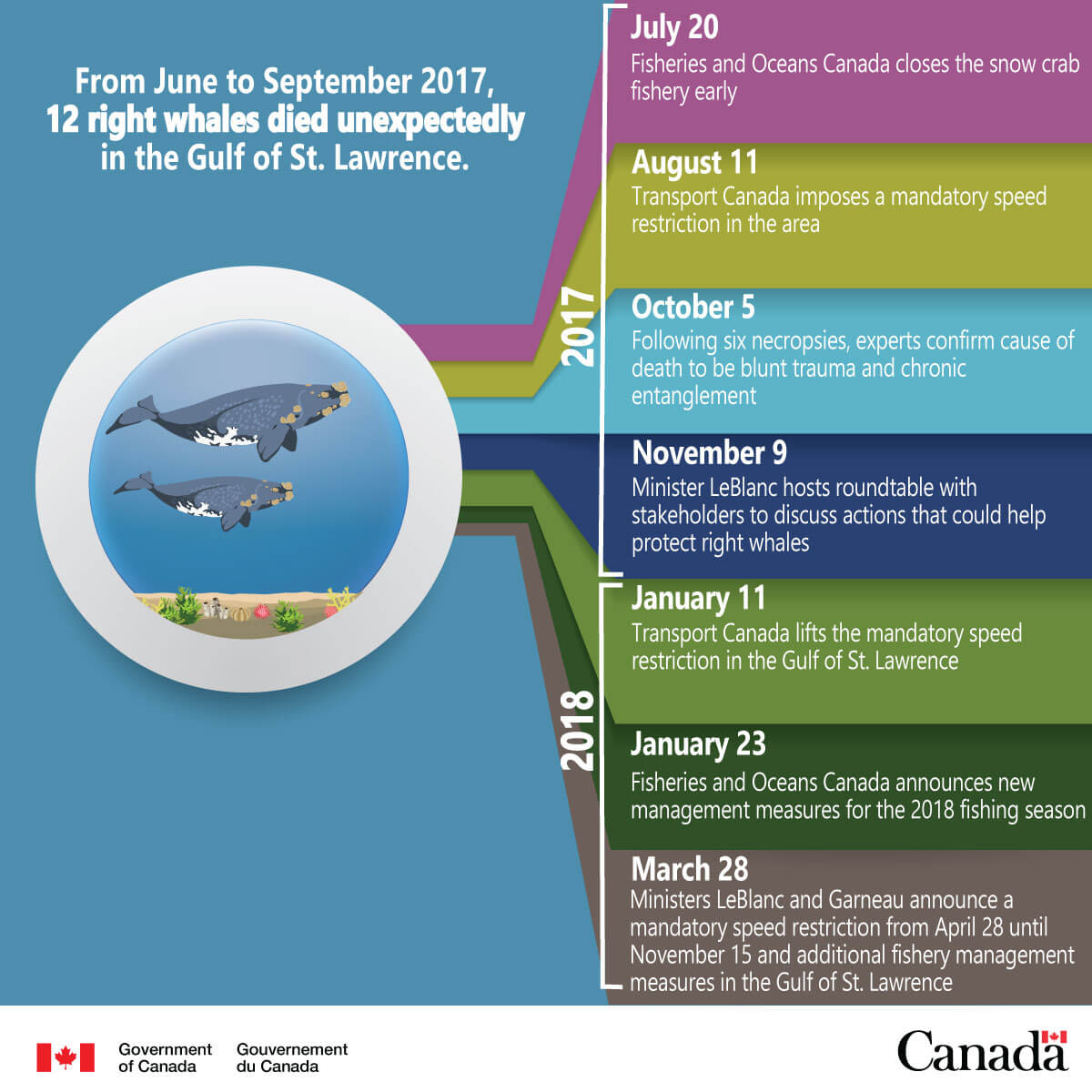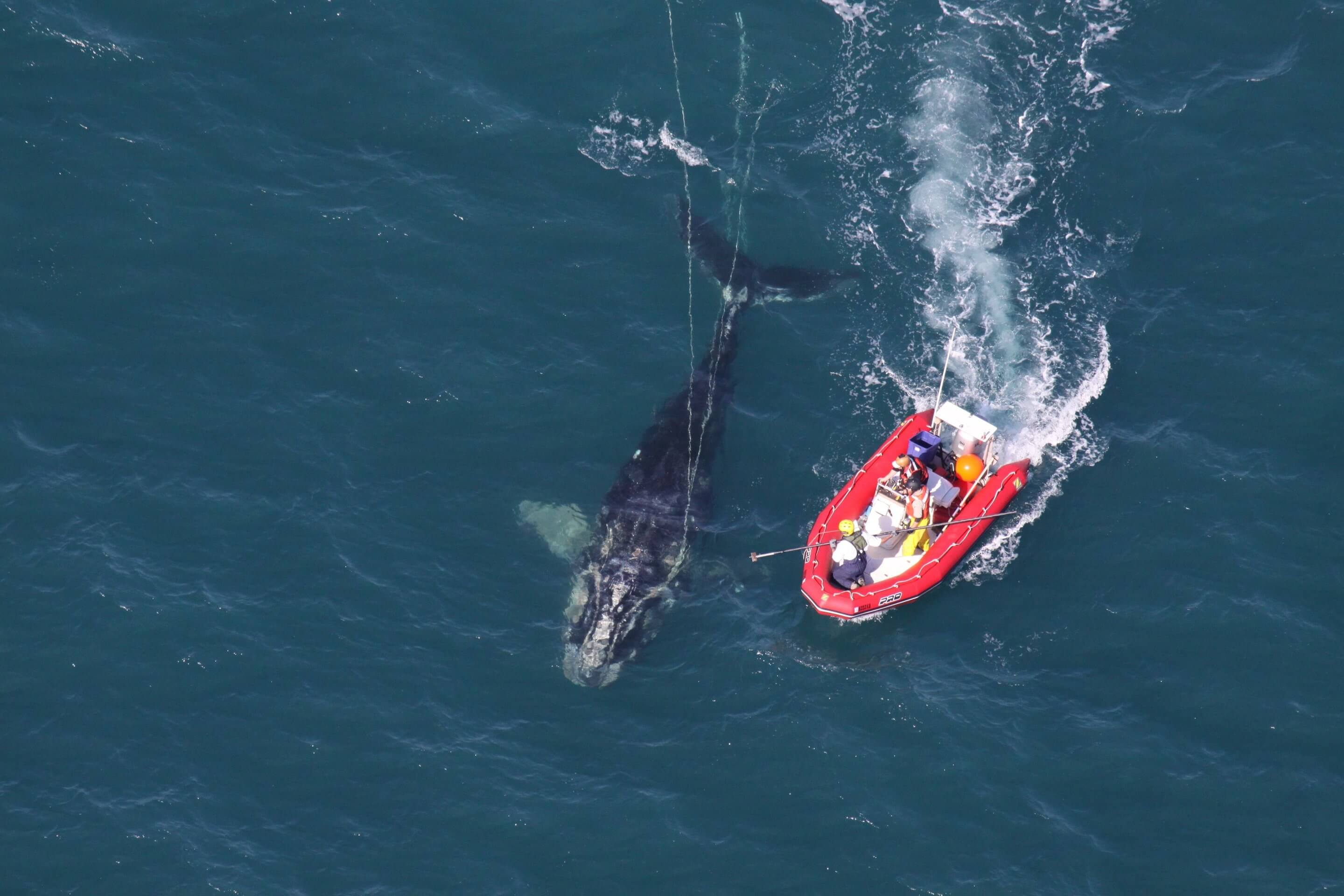







December 4, 2018
During the summer of 2017, the Government of Canada reported that 12 North Atlantic right whales had died unexpectedly in the Gulf of St. Lawrence. Scientists, the media, and the public took notice. The federal fisheries minister met with scientists, Indigenous groups and representatives from the fishing and marine transport industries to discuss possible solutions. During these discussions, the minister said, “We’re open very much to technology and innovation as part of the solution.”
That’s when NAV CANADA got involved. NAV CANADA was asked to use its expertise and understanding of integrating Remotely Piloted Aircraft Systems (RPAS or drones) in Canadian airspace, to manage the required airspace while data was gathered that might prevent such deaths in the future. While the right whales were the most visibly affected, the concern also extended to a wider range of marine mammals.
A decision was made to put together a group of aviation experts who would plan the air traffic management and operational aspects of the mission and carry out extensive airborne surveillance of whale movements in the region.
Capturing the data
Working closely with Transport Canada, NAV CANADA mobilized a team in Ottawa, Montreal and out of Mont-Joli, Québec, to support plans to track the right whales this past August. Time was of the essence. “We faced very tight seasonal deadlines,” says Sylvie Lemay, Air Traffic Control Specialist, RPAS Operations. “NAV CANADA really went to bat for this operation, pulling together a large, crossfunctional team very quickly.”
Every day in August, weather permitting, an RPAS would fly from the Gaspé airport, either over the north corridor above Anticosti Island, or the south corridor between the island and the airport itself. It was our role to protect the airspace so that the RPAS could safely and effectively carry out its mission, including incorporation of last-minute changes that tested flexibility.
“Toward the end of the project, there was also considerable flight activity focused on a pod of whales located to the southeast which required changes to the plans,” says Lemay.

Not your average drone
The RPAS used for the project was an Outlaw SeaHunter, the flagship unmanned aircraft operated by Griffon Aerospace. Weighing in at almost 300 lbs., the SeaHunter is no toy, and substantially larger than the RPAS currently in vogue.
Says Joel Langlois, Controller, Montreal Area Control Centre, “There’s regular VFR traffic in the area, so the obvious challenge for us was to keep things safe during this project, and keep flight disruptions to a minimum.” A number of Aeronautics Act 5.1 airspace restrictions were put in place for the controlled and uncontrolled airspace over the Gulf, the access routes to the operational areas, and the airspace around Gaspé airport itself, during the project’s duration.
Managing the airspace was a juggling act. “Once we had confirmation from the RPAS’ pilot that he was within his mission areas, we could then safely free up the Gaspé region for our IFR and VFR traffic,” adds Langlois. “The idea was to keep the programmed SeaHunter’s flight path as predictable as possible, which has its own set of challenges, so we could best manage the traffic around it.”
In preparing for this project, the team drew on its experience with the G7 Summit that Canada hosted earlier this year in Malbaie, Québec. “We took that model and further refined it to meet the specific needs of this situation. And we’ll build on this new learning experience going forward too,” Langlois says.

Marine scientists come to the aid of a whale tangled in fishing lines.
Finding a solution
Now that the data is in, better-informed decisions regarding marine management can be made. Proposed solutions include changing fishing gear and crab fishing season dates to ensure equipment is removed before the whales migrate into the Gulf of St. Lawrence. Given more reliable surveillance and better real-time information sharing, certain shipping corridors or speed limits have also been altered during high-traffic seasons.
As a result of this project, NAV CANADA is well positioned and experienced to take on similar challenges in the future. “This was all about learning and teamwork,” says Langlois. “It’s really cool that our expertise can help with such a good cause.” Adds Lemay, “I’m truly proud to have been part of this.”